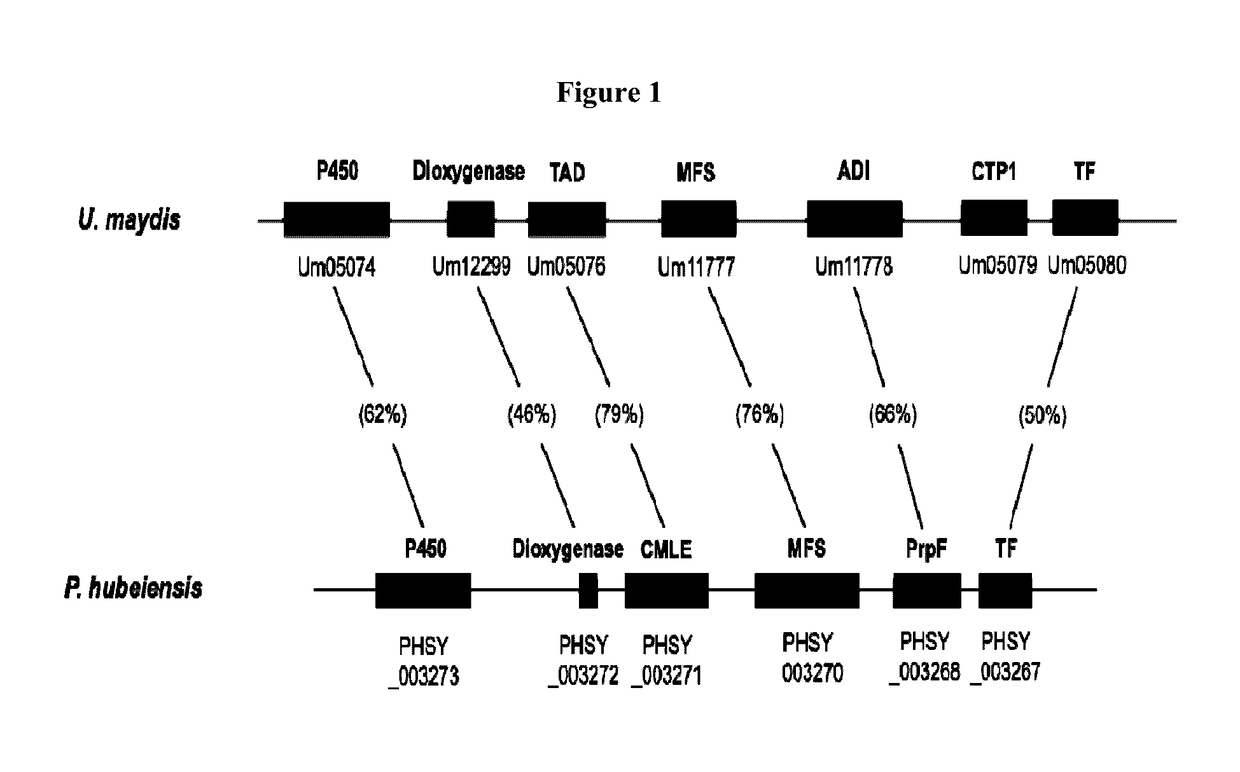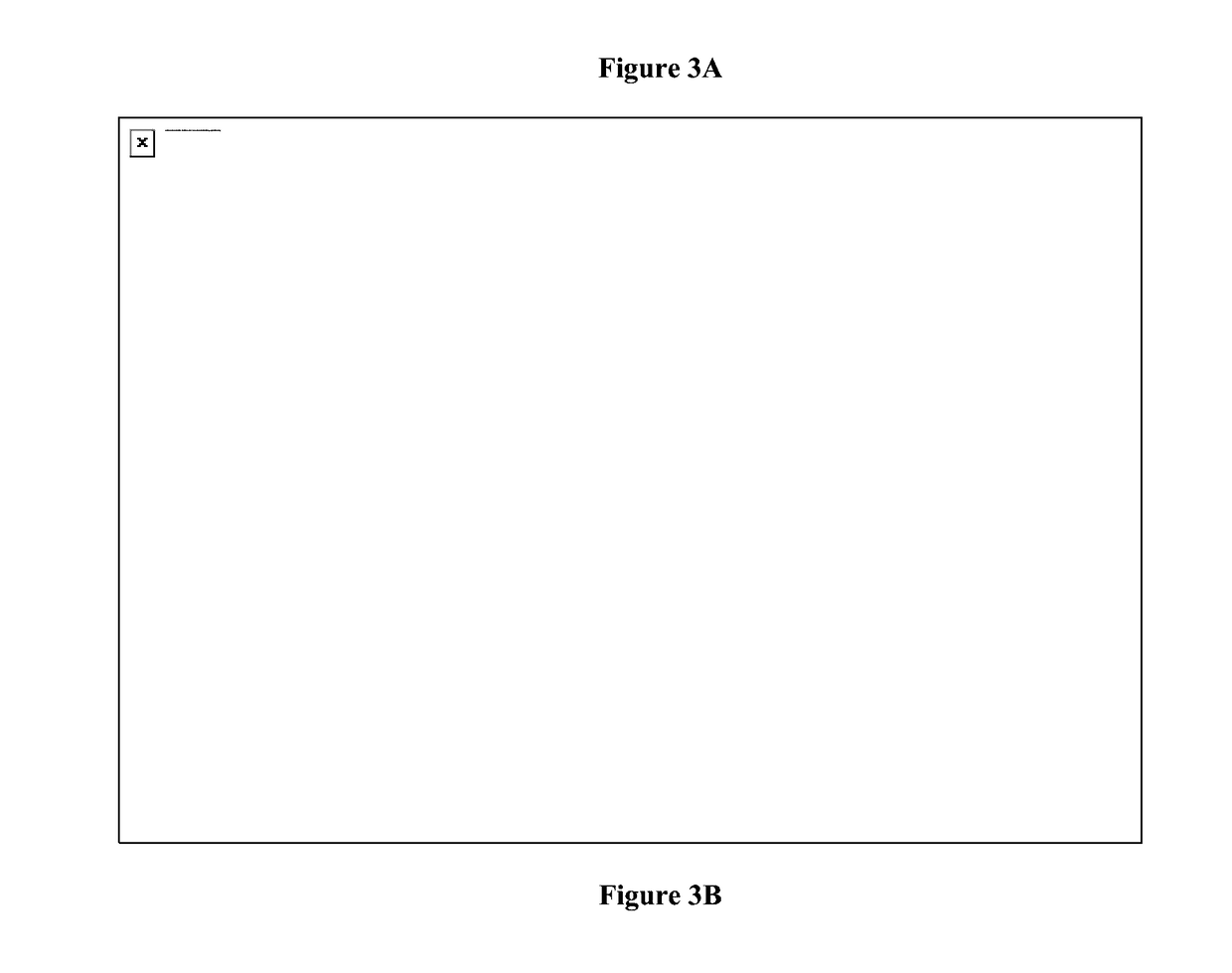Means and Methods for Itaconic Acid Production
a technology of itaconic acid and methods, applied in the direction of lyases, peptides, carbon-carbon lyases, etc., can solve the problems of filamentous fungi fermentation, no information about how these alternative hosts produce ita, etc., and achieve the effect of improving yield and application potential
- Summary
- Abstract
- Description
- Claims
- Application Information
AI Technical Summary
Benefits of technology
Problems solved by technology
Method used
Image
Examples
examples
Generation of UM05076 and UM11778 Deletion Mutants in Ustilago maydis
[0264]The deletion constructs were constructed by using the yeast drag and drop method [Jansen et al. (2005) Gene 344:43-51]. For the deletion of UM05076, the shuttle vector pRS426 was combined with the left flank (5′UTR) and the right flank (3′UTR) of UM05076, respectively, as well as a hygromycin cassette derived from pMF1-h [Brachmann, A, et al. (2004) Mol Gen Genomics 272: 216-226]. For the deletion of UM11778, the shuttle vector pRS426 was combined with the left flank (5′UTR) and the right flank (3′UTR) of UM11778, respectively, as well as a hygromycin cassette derived from pMF1-h. Plasmid maps are shown in FIG. 5 and FIG. 6.
[0265]Vector pRS426-UM05076-Hyg was restricted with SspI to obtain the deletion-construct. Afterwards U. maydis strain MB215 was transformed with this construct, leading to genomic integration via homologous recombination. Disruption of UM05076 was checked by Southern blot analysis using ...
PUM
| Property | Measurement | Unit |
|---|---|---|
| Fraction | aaaaa | aaaaa |
| Fraction | aaaaa | aaaaa |
| Time | aaaaa | aaaaa |
Abstract
Description
Claims
Application Information
 Login to View More
Login to View More - R&D
- Intellectual Property
- Life Sciences
- Materials
- Tech Scout
- Unparalleled Data Quality
- Higher Quality Content
- 60% Fewer Hallucinations
Browse by: Latest US Patents, China's latest patents, Technical Efficacy Thesaurus, Application Domain, Technology Topic, Popular Technical Reports.
© 2025 PatSnap. All rights reserved.Legal|Privacy policy|Modern Slavery Act Transparency Statement|Sitemap|About US| Contact US: help@patsnap.com



